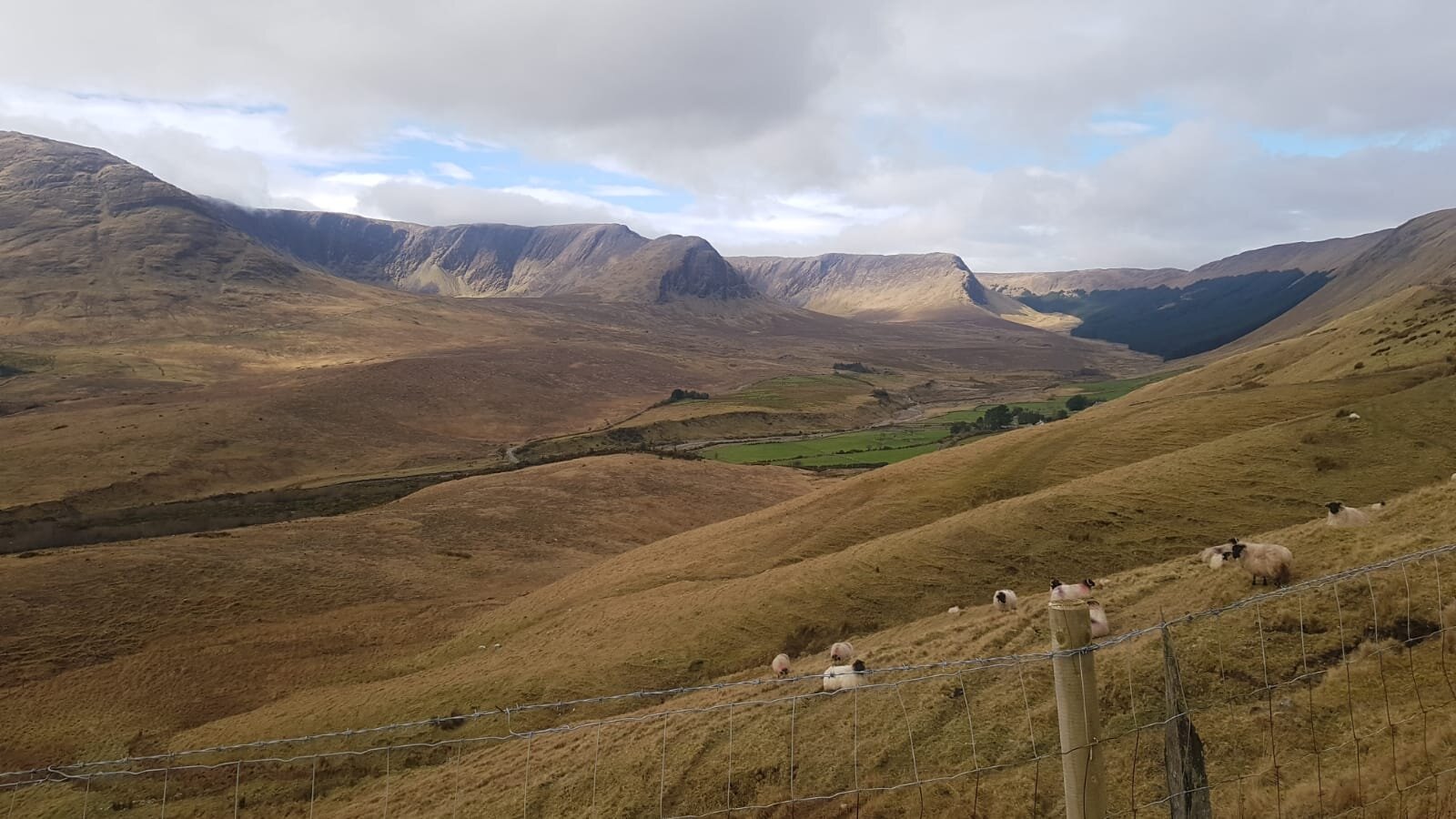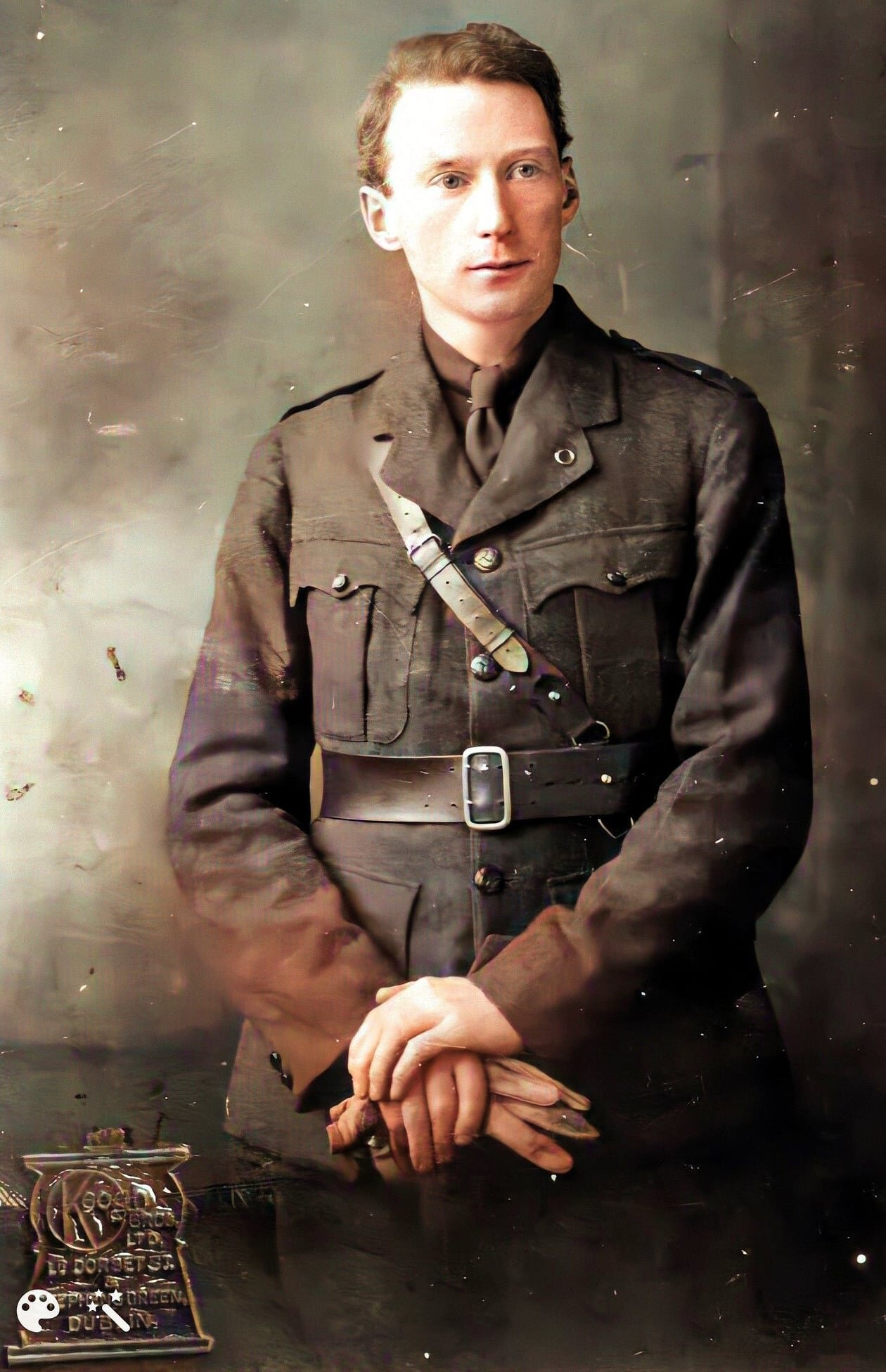Introduction
Welcome to our virtual walking tour of the Tourmakeady Ambush
In this section we give an overview of the setting in which this historical event took place, and give some background on the political and social tension that already existed in the area.
The village of Tourmakeady lies on the western side of Lough Mask in County Mayo. The main road through the village leads north from Tourmakeady to the village of Srah, where it forks towards Castlebar and eastward towards Partry. The main road south from the village stretches to Derrypark and Maamtrasna, where a fork runs past the shores of Lough Nafooey and into the Maam valley. The other fork goes eastward to Finny where it turns north toward Cong, Cross and eventually Ballinrobe. A western road in the village goes over the mountains, via the townland of Tunasaile towards Westport.
The remote mountains on the western shores of Lough Mask were scoured by movements of massive melting ice at the end of the last ice age. This can be seen most vividly along the southern section of the lake, where the high cliffs of Scoltach with its peak at Maamtrasna, 700 metres, run northward to Buckaun. From there the mountains, after crossing the Owenbhrin valley, climb to heights of 600 metres which run as far as Srah. These heights are cut by streams and rivers that have gouged out large scars in the mountainside.
Portrait of Captain Boycott – from The Illustrated London News – 10th July 1897
The Lough Mask area had a troubled time in the decades between the Famine and the War of Independence. The sale of the Moore estate, led to the entry of the Plunkett family to Tourmakeady. They quickly established a big house and a rectory and set about a campaign of proselytisation. The forceful conversion of Catholics was not appreciated by the clergy or their flock and passive resistance soon led to open hostilities and murder. The local curate at the time, Fr Lavelle, radicalised the population into resistance, though the involvement of the Fenian movement in the disturbances at Tourmakeady in those times is not clear. However, it is clear that the Plunkett family, as representatives of both the landlord class and the established religion, was a feared and hated family referred to as “oppressive and bigoted”.
Agitation against landlords and their agents in the area is further evidenced in the murder of an agent of Lord Ardilaun and his grandson in the Derrypark area in January 1882.
On the eastern shores of the lake, near Ballinrobe, at approximately the same time, the process of agitation was reaching its most famous organised action. This was the Land League agitation that surrounded the figure of Captain Boycott. There had been a good Fenian organisation in South Mayo. 'The men that made the backbone of the Land League in 1879 and after in the Plan of Campaign were Fenians'. The ostracisation of this landlord's agent was due to the imposition of exorbitant rent increases. This agitation became so famous that it gave rise to a new English verb, arising from the agent's name, “to Boycott”.
It is no surprise then that with this degree of awareneness and agitation, the Lough Mask region saw one of the most colourful engagements of the War of Independence.
It is not clear whether the republican movement in Ballinrobe formally existed before the 1916 Rising. Ballinrobe was a military stronghold for the British and had often served as a recruiting centre for the British Army during the First World War. A branch of Fianna Éireann, the nationalist youth organisation, was set up by Michael Farragher, Tom Coyne and Henry Flynn in 1916. Pat Kennedy remembers these three men going up Main Street in the late Summer of 1916 with a lighted torch, honouring the men of 1916. Subsequently Kennedy joined the others, to the amusement of the local constabulary.
Conscription was introduced in 1918. In early 1918 Joe Forde and George Bell addressed a meeting in Donellan 's Wood, just outside Ballinrobe. They asked for volunteers to join Oglaigh nah Eireann and three men turned up, these being Pat Kennedy, Michael Jennings and Anthony Doordan, all from Rahard. These were the first volunteers in the Ballinrobe Company, which by the end of 1918 had grown to a strength of over thirty men. Both Forde and Bell were arrested for wearing Volunteer uniforms in Ballinrobe.
A second company formed in Cross, about 10 kilometers from Ballinrobe, by Tom Maguire, before the end of 1918, meant that Ballinrobe was the centre of a battalion of four companies, these being Ballinrobe Company, Cross Company, Ballyglass Company and Srah Company. Maguire, who was born in 1892 was the fourth of eleven children. His father had been active in the Fenian movement and the Land League, so it was no surprise that Tom joined the Volunteers in 1913. He formed the first properly organised company in the Cross area 1917.
Maguire states 'When the conscription crisis of April 1918 broke we were flooded out with recruits. I welcomed them in, but although I did so, I thought I should test them out on a few route marches. That finished most of them; they melted away. There is a story told of a man at Stations here in Cross who was asked by the priest in Confession, 'were you ever in the IRA?' Excommunication was the price of membership. 'I was indeed,' answered the man, ‘but Tom Maguire brought us on a few marches for a couple of nights and I could not keep up with him'. During 1919 recruiting and training continued. Arms were collected from local farmers or taken in raids while most households contributed money to buy arms and ammunition.
In 1920 Mayo was divided into four brigades where previously there had been only one. The South Mayo Brigade had Tom Maguire as Brigade Commandant with Michael O' Brien appointed Brigade Adjutant. In 1921 Maguire set up the South Mayo Flying Column made up of approximately 25 men mainly from Cross and Ballinrobe.




